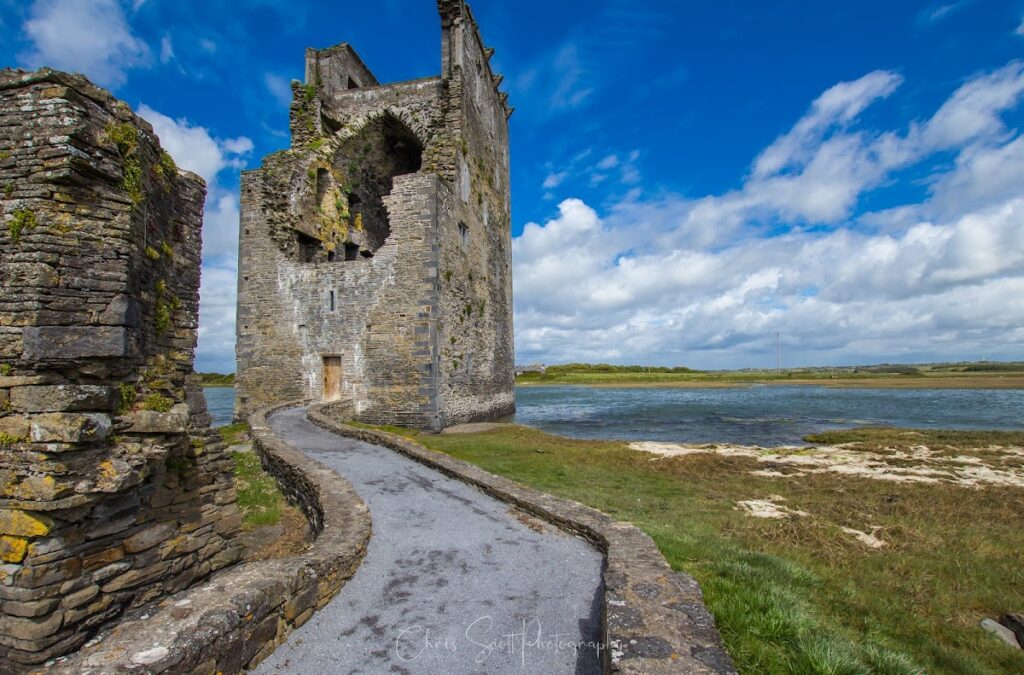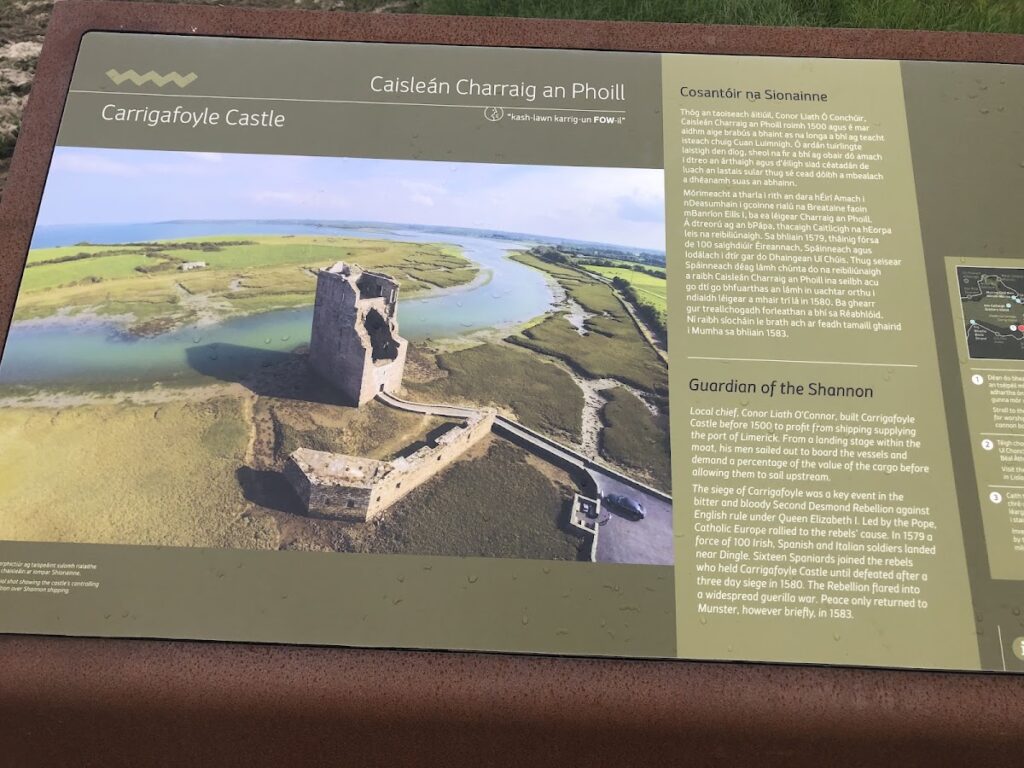Carrigafoyle Castle: A Gaelic Stronghold in Ireland
Visitor Information
Google Rating: 4.6
Popularity: Low
Google Maps: View on Google Maps
Official Website: ballylongfordsnaps.com
Country: Ireland
Civilization: Unclassified
Remains: Military
History
Carrigafoyle Castle, located in Ballylongford, Ireland, was built by the Irish chieftain Conor Liath O’Connor Kerry around the year 1490. This stronghold was established by the Gaelic Irish, serving as a crucial defensive position at the mouth of the Shannon River estuary. Its purpose was to protect the vital river route leading to the important settlement of Limerick, situated about 20 miles upriver.
During the late 16th century, Carrigafoyle Castle became a key site in the conflict known as the Second Desmond Rebellion, which lasted from 1579 to 1583. In Easter 1580, the castle faced a significant siege when it was defended by roughly 50 Irish soldiers joined by 16 Spanish troops who had come to Ireland in support of the Catholic rebellion led by Gerald FitzGerald, the 15th Earl of Desmond. The castle’s defenses were improved under the guidance of an Italian engineer named Julian, who worked on behalf of Countess Eleanor Desmond, a leading figure in the rebellion.
English forces under Sir William Pelham, bolstered by a naval fleet commanded by Sir William Winter, launched an assault on Carrigafoyle Castle with what was then the largest English military force assembled in western Ireland. Over several days, the attackers used heavy artillery to bombard the castle, ultimately causing the collapse of the main tower. Many defenders were killed in the destruction, and those who tried to escape were shot. Captured defenders, including the engineer Julian, were executed. The decisive fall of Carrigafoyle Castle led to the surrender of multiple other castles loyal to the Desmond cause, though resistance continued at some sites until the rebellion ended in 1583 with the death of the Earl of Desmond. After this defeat, the castle was left in ruins and was never rebuilt, with scars from cannon fire still visible on the remaining structure.
Remains
Carrigafoyle Castle was constructed as a tower house, a type of fortified residence common in Ireland during the late medieval period. It stands on a rocky headland beside a small bay along the Shannon estuary, taking advantage of natural defensive features. The site is enclosed by two concentric stone walls: an inner wall fully surrounding the core of the castle and an outer wall that protects all but the eastern side. Around these walls, a moat surrounds the castle, which could be navigated by sizable vessels up to 100 tons in weight at high tide, enhancing its maritime defenses.
The central feature of the castle is its main tower, which rises to approximately 86 feet (over 24 meters) high. Smaller towers are positioned along the outer defensive walls, offering additional protection. The buildings were primarily built of stone, reflecting typical construction of Irish castles in that era. To the north, the castle’s position received natural protection from a wooded island located in the adjacent bay, adding another layer to its defensive system.
Remains of the castle bear clear marks from the artillery bombardment during the 1580 siege, including visible damage indicative of heavy cannon fire. The English attackers used three land-based cannons along with a large naval cannon deployed in the bay, firing on the castle for long periods each day over multiple days. Despite the destruction and subsequent centuries of exposure, the ruins still stand today as evidence of the castle’s former strength and the violent conflict it endured.










